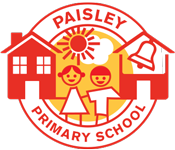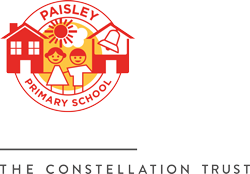

Our DT curriculum
Intent
The national curriculum for design and technology aims to ensure that all pupils:
- Develop the creative, technical and practical expertise needed to perform everyday tasks confidently and to participate successfully in an increasingly technological world
- Build and apply a repertoire of knowledge, understanding and skills in order to design and make high-quality prototypes and products for a wide range of users.
- Critique, evaluate and test their ideas and products and the work of others
- Understand and apply the principles of nutrition and learn how to cook
Design and Technology is an inspiring, rigorous and practical subject. The design technology curriculum at Paisley is crafted to encourage pupils to design and make products that solve real and relevant problems. Design and Technology encourages children to learn to think and intervene creatively to solve problems both as individuals and as members of a team. It encourages children’s creativity and encourages them to think about important issues. The curriculum develops children’s skills and knowledge in design, structures, mechanisms, electrical control and a range of materials, including food. Pupils evaluate their products based on the purpose and function, a process to encourage critical-thinking, problem solving and strategic thinking. The children are also given opportunities to reflect upon and evaluate past and present design technology, its uses and its effectiveness and are encouraged to become innovators and risk-takers. We aim to, wherever possible, link design technology work to other disciplines such as mathematics, science, computing and art.
Implementation
To ensure high standards of teaching and learning in design and technology, we implement a curriculum that is progressive throughout the whole school. Teachers follow a clear progression of skills which ensures all pupils are challenged in line with their year group expectations and are given the opportunity to build on their prior knowledge.
At Paisley, Design and technology topics are blocked to allow children to focus on developing their knowledge and skills, studying each topic in depth. Each topic generally follows a Research- Design – Make – Evaluate structure.
In KS1 children will undertake a mechanisms, structures, textiles and food topic each year, these will be continued in KS2 when children will also undertake an electrical systems and digital world topic.
Teachers plan lessons for their class using the Kapow primary scheme of work and our progression of knowledge and skills documents. Teachers use these documents to develop year group specific long-term curriculum maps which identify when the different topics will be taught across the academic year. The progression document ensures the curriculum is covered and the skills/knowledge taught is progressive from year group to year group.
All teaching of DT should follow the research, design, make and evaluate cycle. Each stage should be rooted in technical knowledge. The design process should be rooted in real life, relevant contexts to give meaning to learning. While making, children should be given choice and a range of tools to choose freely from. To evaluate, children should be able to evaluate their own and their peers’ products against a design criteria. Each of these steps should be rooted in technical knowledge and vocabulary. DT should be taught to a high standard, where each of the stages should be given equal weight. There should be evidence in each of these stages in the DT books, which should also develop to show clear progression across the key stages.
Design and technology at Paisley will be fully inclusive to every child with work being tailored for children with SEND. Children will learn through similar activities with final outcomes modified to suit all needs.
In EYFS the essential building blocks of children’s design and technology capability are established. The children explore and use a variety of materials, tools and techniques through a combination of child initiated and adult directed activities. They will begin to construct with a purpose in mind using a variety of resources using simple tools and techniques appropriately. They have opportunities to experiment with design, texture, form and function and adapt their work when necessary. The children will also share their creations explaining the process they have used.
Impact
The impact of children’s learning in Design Technology is an ongoing monitoring of children’s understanding, knowledge and skills by the class teacher, throughout lessons. This assessment is then used to inform differentiation, support and challenge required by the children. Design Technology is also monitored by the subject leader throughout the year in the form of book monitoring, looking at outcomes and pupil interviews to discuss their learning and understanding and establish the impact of the teaching taking place. The large majority of children will achieve age related expectations in Design Technology.
In addition children will have clear enjoyment and confidence in design and technology that they will then apply to other areas of the curriculum. Children will ultimately know more, remember more and understand more about Design Technology, demonstrating this knowledge when using tools or skills in other areas of the curriculum and in opportunities out of school.
Further information
